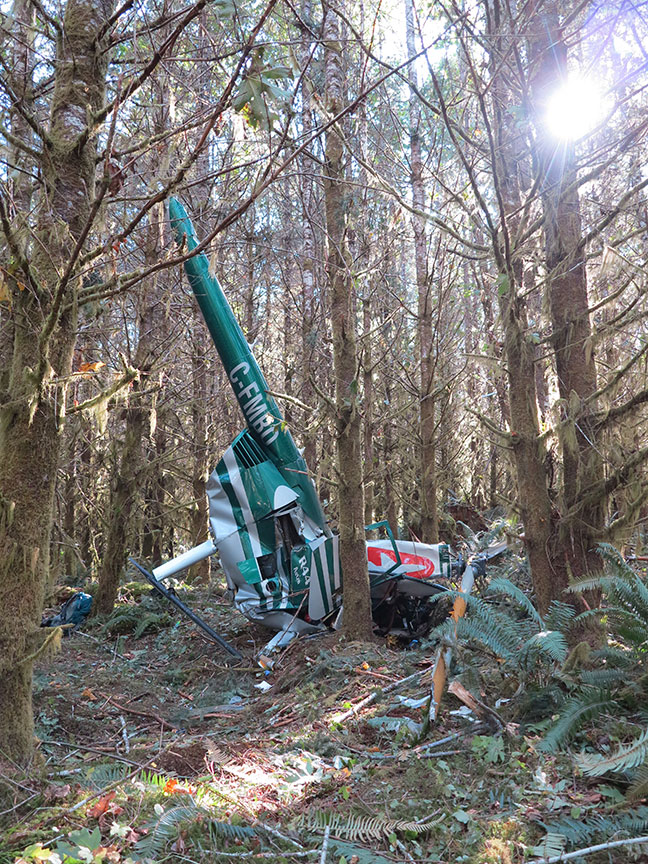Loss of control and collision with terrain
ASAP Avionics Services Ltd.
Robinson R44 Astro, C-FMBO
Campbell River, British Columbia
The occurrence
On 1 October 2017, at 1530 Pacific Daylight Time, the ASAP Avionics Services Ltd. Robinson R44 helicopter departed the Campbell River Airport, British Columbia, on a company indoctrination flight with two pilots on board. At 1548 the helicopter returned to the airport to conduct some hovering manoeuvres in the vicinity of the runway. At approximately 1554 the helicopter began to spin to the right and control was lost. At approximately 1555 the helicopter collided with trees 1.2 nautical miles northwest of the threshold of Runway 12. The pilot seated in the left hand seat was fatally injured, and the pilot seated in the right hand seat was seriously injured. The surviving pilot called 911 on a personal cellphone. There was no post-impact fire, and no dangerous goods were on board. The emergency locator transmitter activated, but the signal was not heard until approximately 80 minutes after the helicopter impacted terrain. The TSB is investigating.
Media materials
News release
Investigation report: Loss of control and collision with terrain of a Robinson R44 helicopter, October 2017, Campbell River, BC
Read the news release
Deployment notice
TSB deploys a team of investigators following an helicopter accident near Campbell River, BC
Richmond, British Columbia, 2 October 2017 - The Transportation Safety Board of Canada (TSB) is deploying a team of investigators following an helicopter accident yesterday near Campbell River, BC. The TSB will gather information and assess the occurrence.
Class of investigation
This is a class 4 investigation. These investigations are limited in scope, and while the final reports may contain limited analysis, they do not contain findings or recommendations. Class 4 investigations are generally completed within 220 days. For more information, see the Policy on Occurrence Classification.
TSB investigation process
There are 3 phases to a TSB investigation
- Field phase: a team of investigators examines the occurrence site and wreckage, interviews witnesses and collects pertinent information.
- Examination and analysis phase: the TSB reviews pertinent records, tests components of the wreckage in the lab, determines the sequence of events and identifies safety deficiencies. When safety deficiencies are suspected or confirmed, the TSB advises the appropriate authority without waiting until publication of the final report.
- Report phase: a confidential draft report is approved by the Board and sent to persons and corporations who are directly concerned by the report. They then have the opportunity to dispute or correct information they believe to be incorrect. The Board considers all representations before approving the final report, which is subsequently released to the public.
For more information, see our Investigation process page.
The TSB is an independent agency that investigates air, marine, pipeline, and rail transportation occurrences. Its sole aim is the advancement of transportation safety. It is not the function of the Board to assign fault or determine civil or criminal liability.
